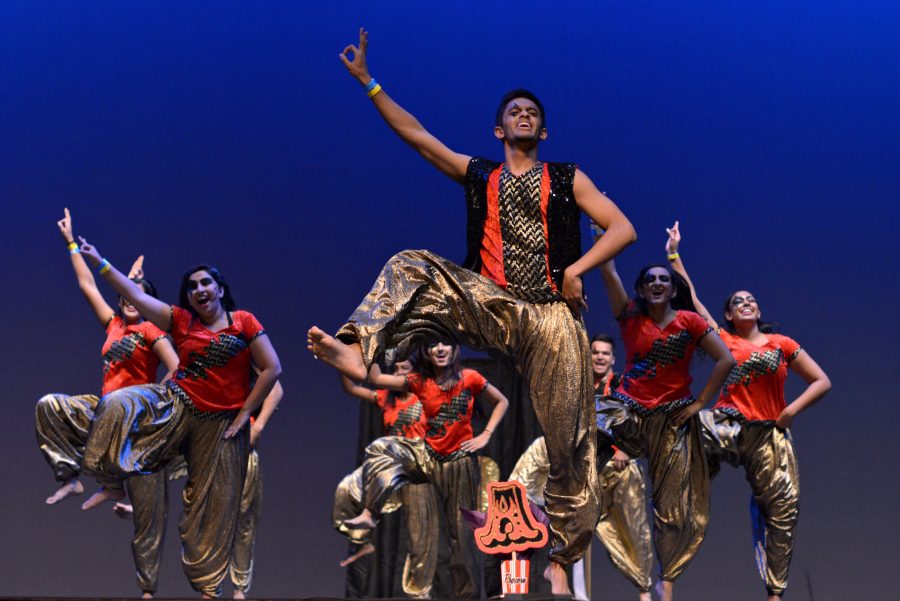A group of dancers huddle backstage, preparing for the third and final round of the competition. Danielle D’Aguilar, Plan II and international relations and global studies freshman, listens as a dancer reminds Saaya, a UT co-ed fusion dance team, that this is their last performance of the year.
Months of mixing songs, designing costumes and choreographing routines have all led to this moment.
“We knew that we were neck and neck,” D’Aguilar said. “I was jarred with energy, and I just started crying.”
After seven teams from across the nation took the stage April 11 at Naach Naach Revolution, a national Bollywood-fusion dance competition in the District of Columbia, the judges counted up the points and announced the results. Saaya came in second place — less than a point away from the first place team, New York University’s Khalbali.
One of the team captains, Anuva Kachru, radio-television-film and corporate communications studies junior, said the results were surprising because Saaya had never performed in a competition that required them to compete in three separate rounds before.
“Winning second was a really big deal because we didn’t really know what we were doing,” Kachru said. “The teams that won first and third both had competed at the competition before.”
This is the second time Saaya has placed at a national competition since the group was founded in 2008. Saaya is one of several fusion teams on campus and currently consists of 17 students who mix hip-hop and contemporary dance moves with South Asian dance styles. These styles include Bollywood, a fast-paced dance from India, and Bhangra, a high-energy dance that formed in Punjab, a state in India.
“[Bhangra] is basically a series of high knees, jumping jacks and squats,” D’Aguilar said. “It’s intense cardio. We need about six water breaks.”
The group blends English and South Asian music to accompany the dances, and, in recent years, they have hired professional DJs to mix the songs. Preparation for the various dance competitions they attend begins over the summer, when the officers select the theme and music for the year’s main performance.
“You don’t want everyone just dancing for eight minutes,” Kachru said. “Your storyline is important.”
Saaya’s dance this year had the theme “dark circus.” The story follows a group of people who audition for the circus. Once they make it in, the ringleader holds them all captive.
The captains created props and designed costumes, which included red and black vests and gold salwars — loose pants worn in South Asia.
Saaya performed the routine at Dance Ke Deewane, a national competition in Miami, in the fall but did not place. The team performed again in March at a state competition held at Baylor University called Gateway to India, and they placed first.
“It’s a year-long process,” Kachru said. “We’ve had to change the routine over time. We took what the judges said and made changes. We’d remove songs or change the choreography up.”
To prepare the choreography, members taught each other the various moves.
“We have certain people on the team that are really good at certain things, and we utilize that,” D’Aguilar said. “Everyone on the team just helps each other.”
Mathematics sophomore Ajay Patel, a member of the team who sometimes gives pep talks before performances, said getting to display the choreography on stage is his favorite aspect of being a part of Saaya.
“Having the music blast to the point where you can’t hear yourself think is probably the best part,” Patel said. “You shut everything else out. You’re not thinking about anything. The only thing that’s on your mind is how you’re going to entertain and what’s your next move.”




















